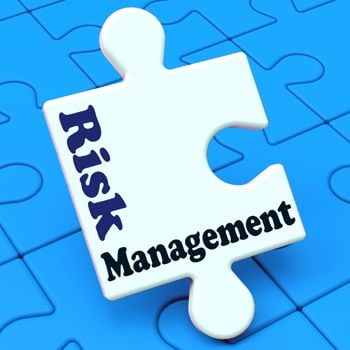NEW TOOLS FOR BETTER RISK MANAGEMENT
NEW TOOLS FOR BETTER RISK MANAGEMENT
Published by Gbaf News
Posted on September 2, 2014

Published by Gbaf News
Posted on September 2, 2014

By Lev Zaks, Head of Multi-Asset Class Business Development, Axioma
The inadequacies of risk management were laid bare by the global financial crisis in 2008. As a result of that experience, we now live in a world in which Chief Risk Officers carry big sticks. A world of mandated periodic reporting by regulators, detailed reporting for management and easy-to-understand client portfolio reports is the new norm. It’s an environment in which we attempt to manage risk across the entire enterprise and in every facet of day-to-day operations.
| Three years ago, Axioma began having conversations with a group of its clients in an attempt to understand what was needed to improve risk management. These were the top 10 features identified: 1. The ability to decompose risk into meaningful factors, not just numbers. 2. Correlations that are updated daily to keep pace with the market. 3. The ability to conduct “what-if” analyses to test hedges or re-allocate resources to reduce risk. 4. Multiple views of risk to capture risk trends quicker. 5. A system that captures non-linear payoffs in tail risk or stress tests. 6. Accurate coverage of all assets, not just proxying. 7. Trend analytics to determine if a portfolio is riskier or the market is more volatile. 8. The ability to conduct interactive analysis, without being batch dependent. 9. The flexibility to add new stress tests quickly, in response to geo-political events. 10. Portfolio and pre-trade analysis confidentiality. |
Much has changed, at least from an oversight and monitoring perspective. And yet, enhanced risk vigilance does not necessarily equate to better risk management. What about the tools we use to identify and mitigate risk? Are those tools any better today, six years after the collapse of Lehman Brothers?
In 2011, Axioma began having conversations with a group of its clients in an attempt to address these issues. The substance of these conversations was essentially this: what can be done to improve the effectiveness of risk management, especially given the accelerating growth of multi-asset class investing? What are the fundamental challenges and how do we begin to overcome those challenges?
Out of those discussions came a number of conclusions.

Lev Zaks
First, it became clear that a crucial disconnect exists between middle office risk functions and frontline traders and portfolio managers. In the middle office, Chief Risk Officers (CROs) have two main jobs: (1) managing risk across all portfolios and (2) reporting any vulnerabilities to the firm itself, clients and asset holders, and regulators. In contrast, the front office takes a more narrow view, with managers focusing specifically on the risk in the portfolios under their management.
The disconnect arises from the fact that each uses different tools to measure risk. The middle office typically opts for simulation-based systems that are suited to a broad range of asset types, market scenarios for stress testing, and complex portfolios. Portfolio managers, in contrast, use factor-based risk models to measure and manage portfolio-level risk. The upshot is that in most institutions, risk departments and portfolio managers speak different languages when it comes to risk.
Without a common language of risk that informs everything from asset allocation to investment strategy, from portfolio construction to trading, it is difficult to create a fully integrated, firm-wide approach to risk management.
Our panel of clients also agreed on one other vital point. While existing methods applied by risk departments can be effective at detecting problems, they have little impact on the way risk is managed. In other words, risk management in the middle office is primarily a diagnostic tool, when it ought to be preventive medicine. The focus in the middle office must shift from “what happened” to “what if” by simulating and addressing the outcomes of potential scenarios. “What if” this position is over-weighted? Or, “what if” I buy into this position? To take the idea one step further, the implementation of firm-wide frameworks for stress tests and “what if” scenarios would put powerful new tools in the hands of both the middle and front offices—tools that by design would speak a common risk language.
Plenty of other issues were put on the table, as well. What about the granularity at which the risk is viewed? Can the risk be decomposed, for example, into meaningful attribution? Are systematic factors taken into account? The ability to decompose into systematic factors not only points to where the risks are coming from, but allows the potential to hedge some of that risk. Does the risk system truly capture the risks of the portfolio? Can it capture the non-linearity of some of the instruments in the portfolio? Can it cope with emerging market debt denominated in local currency? Can it provide a consistent view across a firm’s portfolios and, at the same time, provide meaningful and granular data for each of the asset classes? And what about the proliferation of multi-asset class investing? Asset owners and their managers are increasingly concerned about risk in all asset classes and how those risks interact.
After three years of development, we introduced Axioma Risk, a multi-asset class risk management platform, in November of 2013. Predictably, the response from those clients with whom we collaborated has been positive. Those clients have seen pain points disappear; a relatively smooth transition of processes; and the introduction of a framework for extending the risk-control function across the entire enterprise. But financial institutions in general tend to be wary of innovation, and rightly so. They want to fully understand the implications of introducing any new product and are nervous about disrupting existing processes.
Having introduced a number of innovations in the portfolio optimization and risk-model spaces over the past decade, Axioma recognizes the challenges of such transitions better than most. That said, the need for better risk management and measurement solutions is acute, and forward-thinking institutions are actively and aggressively pursuing solutions that are up to the challenge.
Lev Zaks is Head of Multi-Asset Class Business Development at Axioma
Explore more articles in the Finance category











